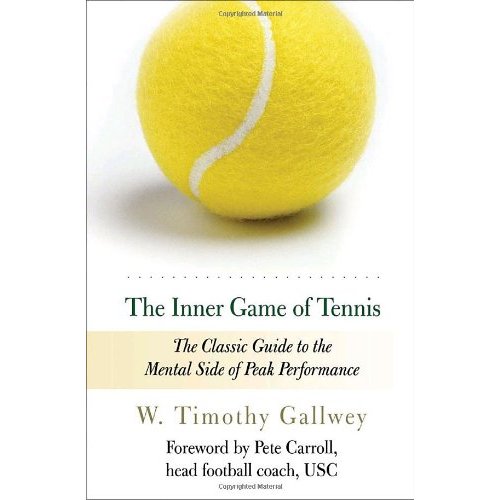
If a coach tried to correct each of the elements of the player’s stroke that were incorrect, it would take months of “learning.” However, if the coach worked at eliminating the player’s negative self-talk by focusing her attention instead on perceiving the details of the ball’s trajectory, most of the positive behavioral changes would take place without conscious effort. When this action results in either an error or an easy shot for the opponent, she confirms to herself, “I really do have a terrible backhand,” and unwittingly sets herself up for the same results on the next similar shot. “Here comes a probable mistake.” She tightens her muscles, steps back defensively as if to avoid the threat, then slashes jerkily at the ball. One of my favorite examples is what I call “the uh-oh experience.” A tennis ball is coming toward a player who thinks she has a weak backhand. In addition, tennis and golf show the kinds of results that can occur when one succeeds in diminishing the impact of interference. And I have continued to find these sports excellent examples for exposing hidden obstacles to learning and performance.
#DOWNLOAD THE INNER GAME OF TENNIS PDF HOW TO#
I learned a great deal about interference and how to help people work through it while coaching tennis and golf-two sports in which the obstacles to performance are difficult to disguise. Hints, suggestions, and indirect probing, though they may seem to take longer than a more direct approach, are usually more successful over the long run. Coaches must generally be gentle in their approach to surfacing interference to learning and performance in an individual or team. Thus, a successful model for skill development must take into account the phenomenon of interference.īut beware: The barriers to learning are often well guarded and may become even more entrenched when challenged. By contrast, reducing interference can have an immediate and far-reaching impact on learning and levels of performance. In my experience, the natural learning process-which is how we actualize potential-is gradual and ongoing. We can achieve increased capacity for performance and learning either by actualizing potential or by decreasing interference-or by a combination of both. “Potential” includes all of our capabilities-actualized or latent-as well as our ability to learn “Interference” represents the ways that we undermine the fulfillment or expression of our own capacities. The approach can be summarized in a simple formula: The goal is simple, if not easy: to give ourselves and our team’s greater access to our innate abilities. 2) is about unlearning the personal and cultural habits that interfere with our ability to learn and perform. The Inner Game approach (see “The Inner Game™” on p. We need to unlearn some of the attitudes and practices we picked up from our formal education that seriously undermine our natural appetite and inherent capability for learning. Thus, as adults, we don’t really need to learn how to learn, as much as we need to remember what we once knew. However, unacknowledged resistance to learning and coaching can make it difficult for us to realize the ideals of the learning organization.Īs children, we were naturally engaged in learning in everything we did.

Because learning increases our ability to perform, the capacity to grow capability is becoming indistinguishable from the capacity to grow wealth. Learning, coaching, and building a learning culture are critical to the success of modern businesses.

And to understand learning, a coach must be actively engaged in the learning process and personally familiar with the kinds of vulnerabilities and obstacles a learner experiences. But, to be an effective coach, an individual must understand the nature of learning. Thus, managers’ most common response to the growing demand for corporations to become learning organizations is to scramble to be the teacher, not the taught-the coach, not the coached. Besides, I’m a professional, with established competencies and knowledge.

Learning focuses on my weaknesses, pressuring me to change the way I think and behave. Learning happens to me it makes me feel vulnerable. Coaching is something I do to improve another person or team it’s part of my job. I point out the obvious-if you learned how to learn, you could apply the knowledge to learning anything, including coaching. “What would be more interesting to you,” I ask an audience of executives, “engaging in a dialogue on learning how to coach or one on learning how to learn?” Generally, 80 to 90 percent of the executives vote for coaching.


 0 kommentar(er)
0 kommentar(er)
